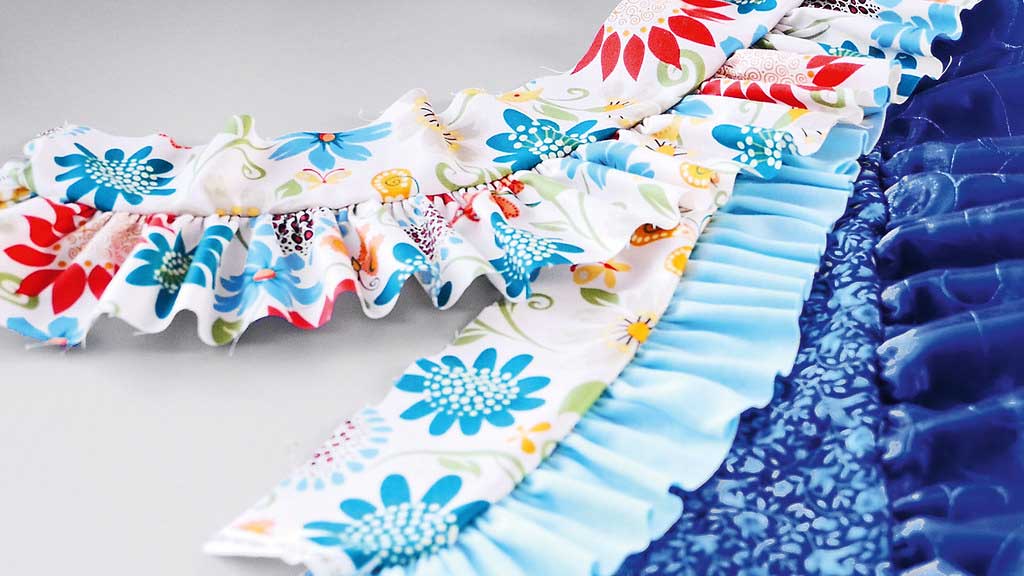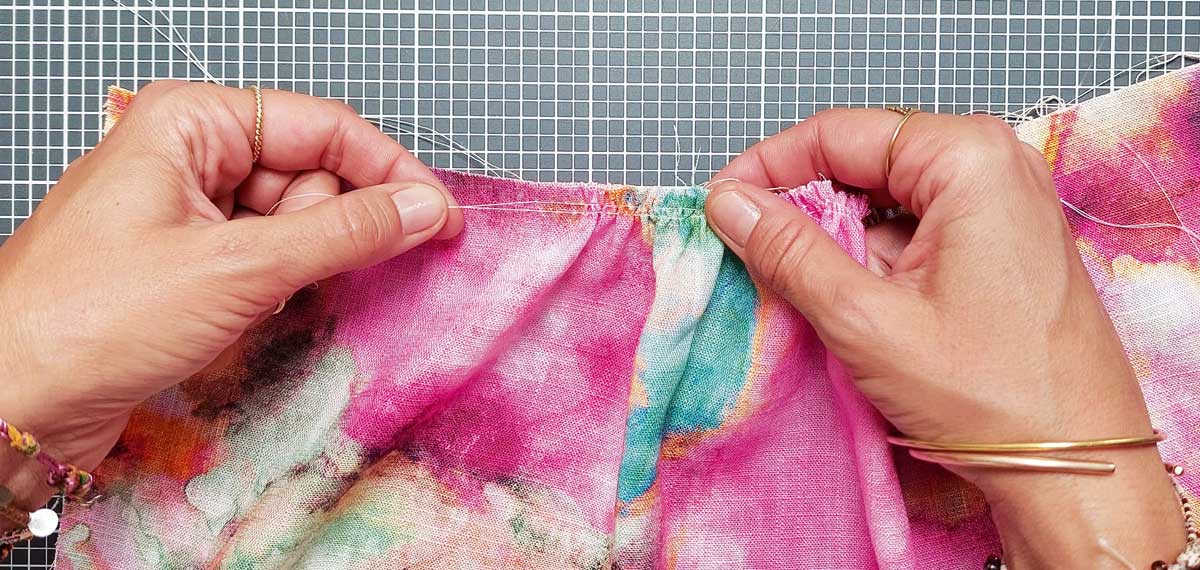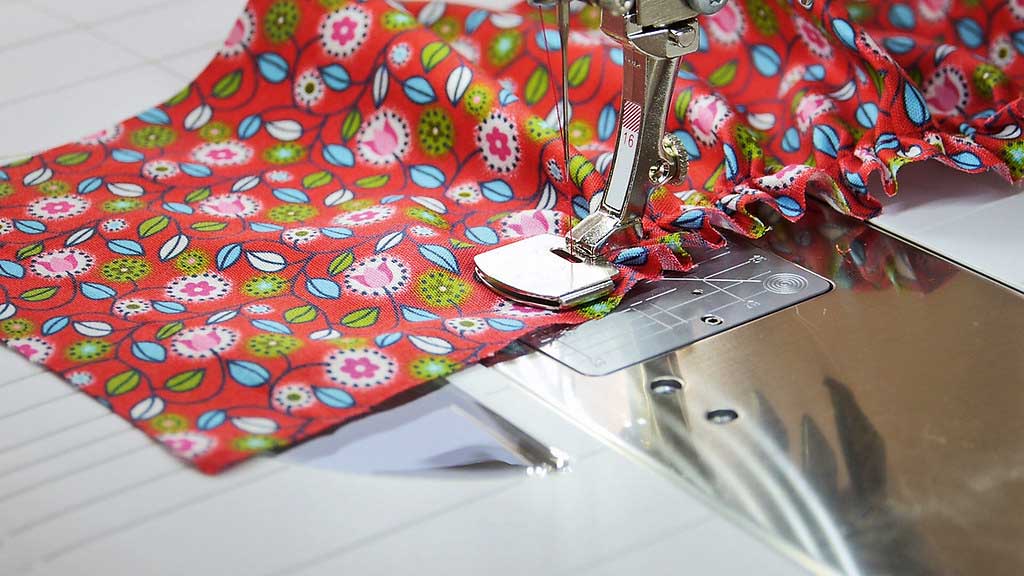Gathering is one of many ways that parts of a garment (or other project) can be joined together when one portion is larger than the other. Sometimes this task is accomplished with pleats or darts, but often gathering is the most used option. Think of a gathered skirt joined to a fitted bodice, or a gathered ruffle trimming a skirt or apron.

In addition to the obvious fullness in the above examples, gathering can also be more subtle, like to help ease fullness into a sleeve cap, or pulling in a sleeve to fit a cuff.
Methods
There are multiple ways to gather, but the most common method uses basting stitches to pull up the fullness to fit an adjacent portion. To gather using basting stitches—those straight stitches 5-6mm long—it’s best to use multiple rows for security. Stitch a line of basting within the seam allowance, and another row ¼” away. On heavier fabrics, often a third row is added just outside the seam allowance as well. Leave a long thread tail at the end of each basting row.
Once the basting lines are in place, gently pull on the bobbin threads of all the rows at the same time. For best distribution of fullness, it’s best to pull from both ends, carefully easing in the fullness toward the middle. When you reach the requisite length for the gathered portion, tie off all the thread ends to secure the length.

Gathering lines can also be put in with hand stitching—especially helpful on more delicate fabrics where machine needle holes might show.
Zig-Zagging Away
Another option for gathering is to use a zigzag stitch and sew over a heavier thread, yarn or small cord just inside the seamline. It’s imperative that the wide, open zigzag stitch is wide enough to easily span the carrier thread, essentially making a casing for it. Note: If the zigzag accidentally catches the heavier thread, gathering won’t work, so stitch slowly and carefully to avoid catching it. If your machine has a buttonhole foot, or other accessory foot with a channel on the underside, that can be helpful to position the heavier thread down the center of the zigzagging.
Dental floss is ideal to zigzag over!
When using a zigzag stitch for gathering, be sure to stitch over the entire length where gathers are needed. Then, gently pull on the encased cord or thread, holding the opposite end securely so that it doesn’t pull out. When you achieve the desired fullness, tie off the threads at both ends to secure.
When you have the garment section gathered to size, it’s time to join it to the adjacent portion. It’s best to match center points and even quarter points for even gather distribution. Note that you can slide gathers along the thread lines to ensure they are evenly distributed along the length of the area. Pin in place, then stitch along the seamline. For the best look, don’t let gathers form deep pleats or folds along the stitching line, and keep them perpendicular to the cut edge.
Once the gathered section is joined to the adjacent portion, remove any basting stitches that show on the right side.

How many gathers do you need?
Commercial patterns have figured that amount for you, but if you’re venturing off on your own, consider these.
- The minimum ratio of the ungathered size to the finished size is 1.5:1. This produces light gathering on medium-weight fabrics.
- More common is a 2:1 ratio.
- On very lightweight fabrics, you can even go up to 4:1.
Differing ratios are used on different types of garments—for example a tutu may have a 4:1 ratio, while a simple gathered skirt ratio might be 2:1. If you have a 30” waist and you want a flowing gathered skirt, the skirt section would measure 60” before gathering.

Other options for gathering include a gathering foot or ruffler. Check with your dealer to see if these accessories are available for your machine. Also, you can gather using a serger.
Several photos in this article are courtesy of Bernina.
~Linda Griepentrog is the owner of G Wiz Creative Services and she does writing, editing and designing for companies in the sewing, crafting and quilting industries. In addition, she escorts fabric shopping tours to Hong Kong. She lives at the Oregon Coast with her husband Keith, and three dogs, Yohnuh, Abby, and Lizzie. Contact her at gwizdesigns@aol.com.






